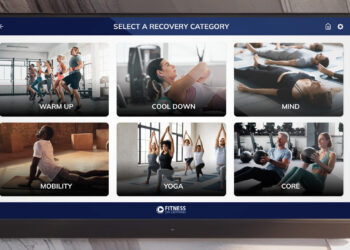
The American Marketing Association Dictionary defines “brand” as the “name, term, design, symbol or any other feature that identifies one seller’s product distinct from those of other sellers.” Now, think about your company’s brand. What are its identifying features, and what makes it distinct? Look also at all of your marketing platforms. Is your brand consistent on each?
James Cockerille, the senior director of strategy for FutureBrand in New York City, knows the importance of branding. Since FutureBrand’s founding in 1999, it has worked with big-name brands such as American Airlines, UPS, Nestlé, Disney and UPS. Cockerille took some time out of his busy schedule to speak with Club Solutions about branding, what it means, and what clubs should know.
How important is branding to a company?
JC: For most of the companies we partner with, branding is the company. It is the offering. That’s not to say our work is responsible for 100 percent of their value or that every decision must get a brand manager’s signoff. But they appreciate that it holds great potential. Equinox is a group that gets this. Even though they don’t consistently execute, there’s a deeply shared self-concept by those working there. SoulCycle (owned by Equinox) is another example of an idea and spirit pervading all aspects of the business.
You could argue all you need is a catchy name and striking logo. But logos, campaigns, names, experiences remain crucial representations of the brand. I’ve observed time and again that the deeper value of any interesting enterprise will be in the more subtle, more private conception of why it’s unique in this world. That’s the gold under the dragon. That’s what we’re modeling when we create strategies and try to inspire the formal things like name, logo, etc. It’s vague, but it’s pervasive and it’s powerful.
What’s something you think companies commonly miss the mark on in terms of branding?
JC: Believing everything must be policed instead of building in flex, ownership and surprise. There’s a prevalent bias for control when it comes to branding, which is justifiable because many programs are initiated after a period of dilution and complexity. But that bias is damaging if it stifles creativity, which is a form of vitality that will energize (or drag on) everything you do. Control tendencies can be felt through the entire chain of experience from internal teams to your customer to category peers. The better agencies have embraced the shift in control that is happening between marketers and marketed-to. They can provide identities that are distinct while accommodating (even encouraging) the license and interpretation of users and audiences.
How can health clubs make sure they’re representing their brand accurately?
JC: Ignore the PDF route and build back-office brandhubs well before you’ve committed to an identity system. The long-term aim is to support users and leverage technology for repetitive tasks that many want DIY support on anyway. But the short-term benefit is significant as well. By building online platforms for brand-related assets, messages, strategies, etc., you establish habits of usage well before launch, and you can use the online system to manage versions. Anyone who has been through a lengthy development program can appreciate how hairy and frustrating it is when the latest, most finely-nuanced logo execution can’t be located for an important presentation. You invest a lot of time and money, so you want to be sure you’re always working with the version that represents all input. But without technical systems, things can and will fall through the cracks.
Nowadays, health clubs may boast and use multiple platforms — how can they ensure they’re representing their brand accurately on each?
JC: Build in connections between platforms (web, mobile, experience) to make a clear web of identity. People are using connectivity clues when deciding what a brand is actually about. And people will lend their trust more quickly to experiences that present few gaps, dead-ends or inconsistencies. This is why digital strategy or at least digital-thinking is so important. Part of this is in appreciating that few customer journeys are as linear or as predictable as they used to be.
The thing to remember in all this craziness is to avoid the trend if you haven’t yet defined what your [point of value] is to be within it. Don’t just entertain customers so you can say you have an app. Think on the key emotional ideas that your gym or sports center should possess uniquely from all the others. And create digital conversations, productivity tools, or simply great photos that reinforce that idea.
What’s something else about branding you think clubs should know?
JC: The aspects and benefits of modern brand building are too vast and dynamic to assume a set-it-and-forget-it approach will provide even mid-term leadership. The smarter companies seem to build it in as hygiene, then plan, hire and contract appropriately. This can be hard to justify since the measurements of brand-investment efficacy are open to interpretation. So my advice is to seek counsel on the longer-term trajectory beyond brand definition. My other advice is to use a brand-development engagement as a way to clarify what really makes your business tick, and then seek ways of expanding on that thesis. Branding and business are inextricably linked, so learnings in one realm accelerate success in the other. If you let it!
Stay ahead in the fitness industry with exclusive updates!
Rachel Zabonick-Chonko is the editor-in-chief of Club Solutions Magazine. She can be reached at rachel@peakemedia.com.











